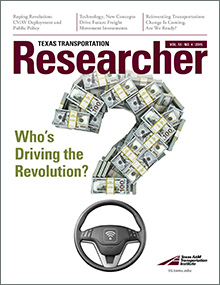It’s a technique that’s been used for years in the trucking industry, but now drafting, or truck platooning, is about to enter the world of autonomous driving known as level 2 truck platooning.
The Texas A&M Transportation Institute (TTI) is beginning phase one of a project to test the feasibility of level 2 truck platooning and create a concept of operations and design. Building upon past and current research, the TTI team seeks to demonstrate the safety benefits, fuel savings and emission reductions achieved by extending vehicle automation to freight truck platoons. The project is sponsored by the Texas Department of Transportation’s Innovative Research Program.

Level 2 truck platooning is an extension of cooperative adaptive cruise control that uses automated lateral and longitudinal vehicle control, while maintaining a tight formation of vehicles with short following distances. A platoon is led by a manually driven truck and allows the drivers of the following truck(s) to disengage from the driving tasks and monitor the system performance. Driving in a platoon formation has demonstrated the potential for significant fuel savings benefits and associated reductions in emissions from the vehicles within the platoon.
According to TTI Senior Research Engineer Beverly Kuhn, truck platooning technology offers benefits for the trucking industry.
“Research suggests that platooning technology can provide a 5 to 20 percent fuel savings, depending on the gap, speed, number of vehicles and location of a vehicle within a platoon,” explains Kuhn. “Platooning also offers other benefits, such as emission reductions, additional vehicle safety features and increased highway throughput, just to name a few.”
“Truck platooning not only demonstrates an application of both connected and automated vehicle technologies, but it’s also one of the few applications that have a better understood value proposition,” says Mohammad Poorsartep, TTI research scientist and co-principal investigator. “While there are still many unknowns and challenges ahead for truck platooning, this project, in partnership with industry and government, aims to explore solutions and pave the way toward deployment.”
